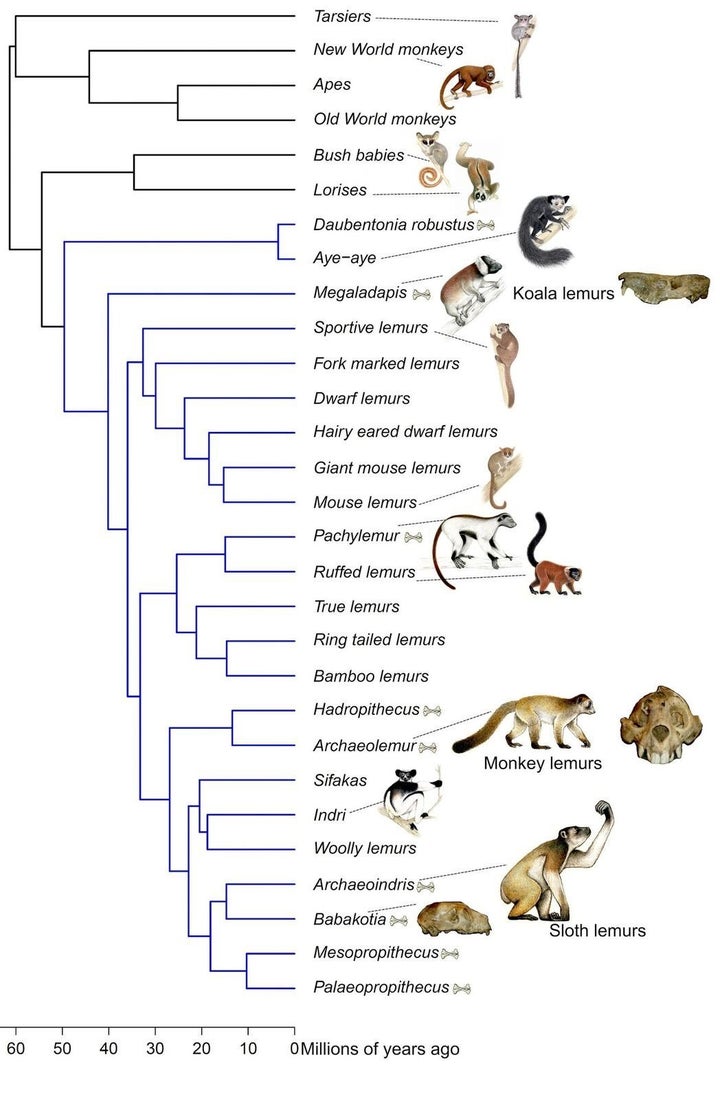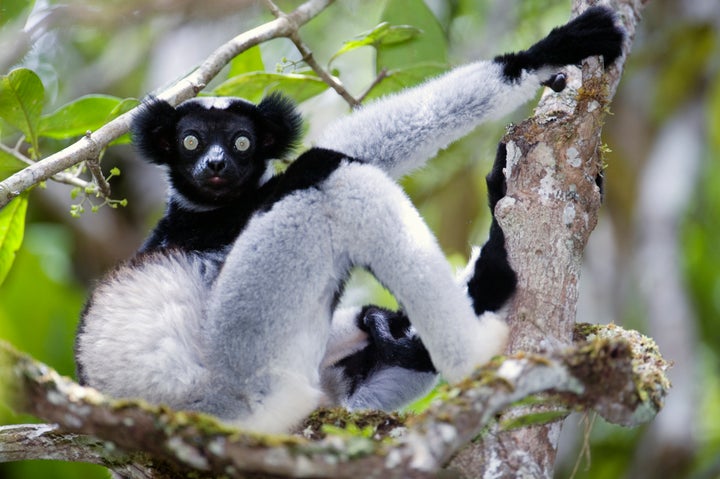
A team of scientists in New York has crunched the data to build the most complete family tree yet for lemurs, a group of wide-eyed primates found only on the African island of Madagascar.
Scientists have long been puzzled by the evolutionary history of these peculiar creatures, as not much is known about what their ancestors were like or where else on the planet they may have lived.
Now, Dr. James Herrera, researcher at the American Museum of Natural History and Dr. Liliana M. Dávalos, professor of ecology and evolution at Stony Brook University, have published the first study to combine genetic and anatomical data of both extinct and living lemurs to create the most complete lemur family tree yet.
"We need the evolutionary tree to understand the places species come from, how new species arise, and to place each species in relation to all others on Earth," Dávalos told The Huffington Post. "The evolutionary tree tells us when new species arise over time, as well as how extinct lemurs related to all living species. Using other statistical techniques, the tree can also be used to calculate how often species went extinct before humans arrived in Madagascar."

The study, published in the journal Systematic Biology on Monday, includes more than 90 percent of the 100 living and 17 recently extinct lemur species.
To build the tree, the researchers analyzed the DNA sequences and anatomical data of several lemur species. They also used statistical techniques to estimate how long ago different groups of lemurs evolved based on genetic and anatomical changes.
"Surprisingly, we find some of the extinct species were unique and they have no close relatives living," Herrera said.
"Most extinct lemurs were giants compared to living species. The largest living lemur today weighs about 20 pounds; the largest extinct lemurs clocked in at about 350 pounds, as big as a silverback male gorilla," he continued. "The largest extinct lemur, Archaeoindris, had similar anatomy to giant ground sloths that went extinct in North and South America."

The researchers concluded that lemurs first evolved around 50 to 60 million years ago in Madagascar.
"Ancestors of lemurs likely arrived on Madagascar by dispersal -- perhaps washed from Africa to Madagascar floating on vegetation rafts, or with some small stepping-stone islands to help along the way," Dávalos said. "The currents in the Mozambique Channel at that time likely flowed from Africa to Madagascar, while at later times the currents flowed in the opposite direction."
Just last week, scientists discovered that monkeys may have migrated from South America to North America some 21 million years ago -- far earlier than previously thought -- possibly by rafting on a mat of vegetation.
"Primates are known for doing this," Dr. Lauren Gonzales, a primate paleontologist at Duke University who wasn’t involved in the study, told Science magazine.
Mapping the evolutionary history of lemurs and other primates is important because it not only sheds light on these primates’ past, but also their future — after all, a whopping 95 percent of living lemurs are threatened by extinction, Herrera said.
"This study found the extinction of the giant lemurs was not random across the evolutionary tree," he said. "We might then focus on closely related living species to evaluate if they also have traits putting them at risk of extinction. Finally, an evolutionary tree is also indispensable to analyze and predict how species adapt to different environments, or how they may be affected by changing climates in the future."

